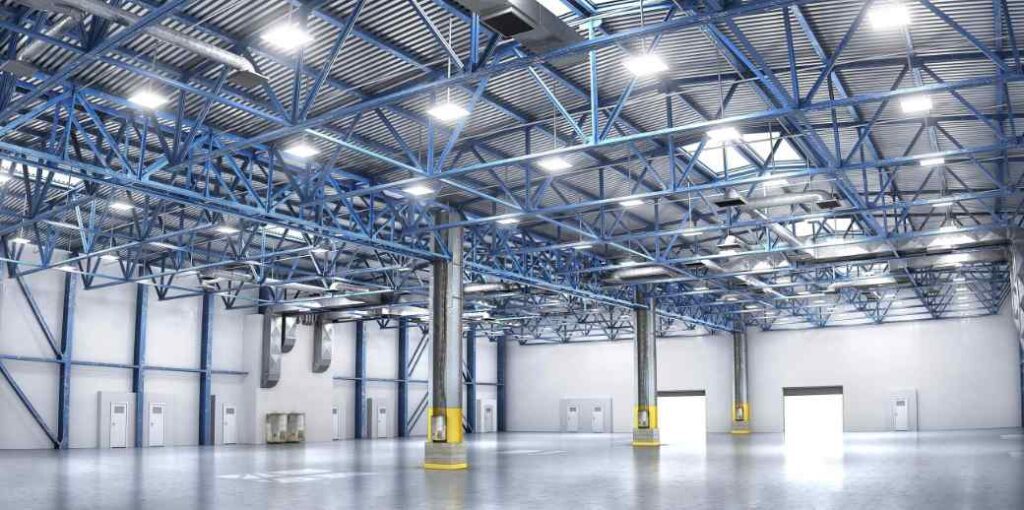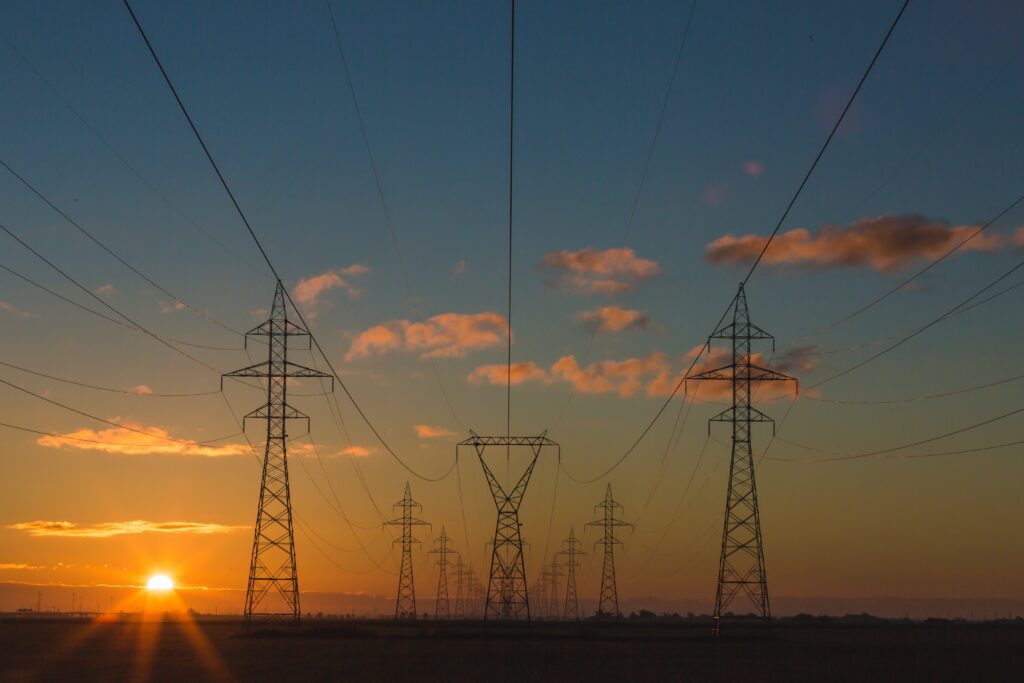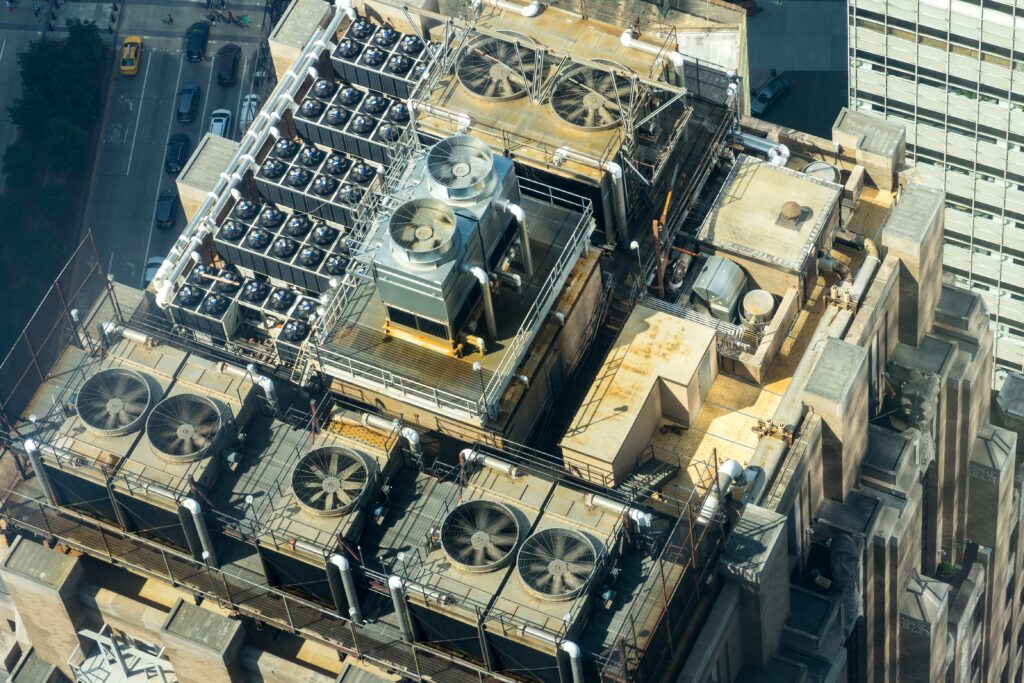Maximizing Profit: Why Energy Efficiency is Essential for Your Commercial Or Industrial Building Project

With our growing industrial complex taking a larger toll on the environment each year, it’s becoming increasingly important that we prioritize energy efficiency in all aspects of our lives, including commercial and industrial building construction. In addition to being a responsible and sustainable approach, energy efficiency also yields significant benefits, from cost savings to improved indoor air quality and occupant comfort. In this blog, we'll explore the critical role of energy efficiency in commercial or industrial building construction and how it can lead to a brighter, cleaner, and more sustainable future for us all.
Understanding Energy Efficiency
Energy efficiency is crucial in commercial or industrial building construction. It involves using less energy to perform the same tasks, resulting in lower energy consumption and reduced greenhouse gas emissions. The goal is to reduce energy demand and promote sustainable development, which can be achieved through several methods, including the use of energy-efficient building materials and optimizing building design.

Several factors affect a building’s energy efficiency, including location, orientation, insulation, and overall design. Buildings located in areas with milder climates require less energy for heating and cooling, for example resulting in lower consumption. Orientation is also critical, as buildings that are correctly oriented can benefit from natural lighting and ventilation. As well, proper insulation can reduce the energy required for heating and cooling by maintaining indoor temperatures, which reduces the demand on air conditioning and heating systems.
The design of a commercial or industrial building should incorporate energy-efficient strategies that consider the building's intended use, the surrounding environment, and the occupants' needs. This includes the use of passive solar design, natural ventilation, and and the use of natural light, which can reduce the need for artificial lighting and heating, further promoting sustainable energy use.
Building Materials
Building materials are an important aspect of constructing a commercial or industrial building with a focus on sustainability and energy efficiency. There are many types of energy-efficient building materials available in the market that can be used to achieve this goal. Some of the most commonly used include insulated concrete forms (ICF), structural insulated panels(SIPS), and triple-glazed windows. Insulated concrete forms are pre-made forms that use rigid insulation as the concrete form that remains in place permanently to provide insulation for the structure they enclose. These walls provide a high level of insulation, which reduces the amount of energy needed to heat or cool a building. Structural insulated panels consist of foam insulation sandwiched between two sheets of metal or other structural materials.

HVAC Systems
Commercial and industrial buildings often require large heating, ventilation, and air conditioning (HVAC) systems to maintain a comfortable indoor environment. However, these systems can consume a significant amount of energy, making them a major contributor to high utility bills and carbon emissions. That's where energy-efficient HVAC systems come in.

Energy-efficient HVAC systems use advanced technologies to provide the same level of comfort while consuming fewer resources. For example, geothermal heat pumps use the constant temperature of the earth to provide heating and cooling, reducing the energy required to run the system. Similarly, air-source heat pumps extract heat from the outdoor air in winter and release heat to the outdoor air in summer, making them a more sustainable and efficient alternative to traditional HVAC systems.
However, it's important to note that the proper sizing and installation of HVAC systems are necessary for their efficiency. Oversized or undersized systems can lead to wasted energy, poor indoor air quality, and increased maintenance costs. Working with an experienced HVAC contractor who can design and install a system that meets the specific needs of your commercial and industrial building can ensure maximum efficiency and cost savings.
Lighting
Energy-efficient lighting is an essential component in a commercial or industrial building that seeks to provide a more sustainable, energy-efficient environment. Traditional incandescent bulbs are inefficient and consume a lot of energy, leading to increased costs and greenhouse gas emissions.
Energy-efficient lighting – such as light-emitting diode (LED) and compact fluorescent lamp (CFL) bulbs – uses significantly less energy and lasts much longer than traditional incandescent bulbs. LED bulbs, for example, use up to 75% less energy and last 25 times longer than incandescent bulbs. Additionally, LED bulbs produce less heat, which reduces the cooling load of HVAC systems in warmer climates.
Another way to improve the lighting in your commercial or industrial building is to use natural light whenever possible. Installing windows, skylights, and light shelves can increase the amount of natural light in a building and reduce the need for artificial lighting.
Furthermore, installing lighting controls such as occupancy sensors and timers can significantly reduce energy consumption. Occupancy sensors automatically turn off lights in unoccupied areas, while timers can be programmed to turn off lights at specific times, reducing the amount of energy consumed during non-business hours.
The Importance of Insulation
Insulation plays a vital role in the energy efficiency of commercial and industrial buildings, helping to keep a consistent and comfortable indoor temperature while reducing the need for heating and cooling. Proper insulation helps to reduce heat loss and gain through walls, ceilings, floors, and roofs, which can be responsible for up to 40% of energy loss in a building.

The type of insulation used in a building depends on several factors, including the climate, the building's design, and the budget. Fibreglass insulation is a common and cost-effective option that is easy to install and provides good thermal insulation. It is made of glass fibres and comes in batts or rolls that fit between wall studs or ceiling joists.
Cellulose insulation is another cost-effective option made from recycled paper products treated with fire retardants. It can be blown into cavities in walls or attics to provide better coverage than fibreglass insulation. Cellulose insulation is particularly useful for retrofitting older buildings that have limited space for insulation.
Spray foam insulation is a more expensive option that provides excellent thermal insulation and air sealing. It is made by mixing two chemicals that expand to fill the space, creating a tight seal. Spray foam insulation is particularly useful for sealing gaps and cracks in the building envelope, reducing air leakage, and improving energy efficiency.
In addition to reducing energy consumption, proper insulation also improves indoor comfort by minimizing temperature fluctuations and reducing noise levels. It also helps to reduce the building's carbon footprint, contributing to eco-friendly sustainability.
The Role of Renewable Energy
Renewable energy, such as solar and wind power, help reduce greenhouse gas emissions and improve energy efficiency in commercial and industrial buildings. Solar panels can be installed on the roof of a building to generate electricity, reducing the building's reliance on grid power. Wind turbines can also be installed to generate power.
In addition to solar and wind power, there are several other types of renewable energy systems that can be incorporated into commercial or industrial building construction. Geothermal energy systems use the natural heat of the earth to provide heating and cooling, which can significantly reduce energy consumption. Biomass systems use organic materials, such as wood chips and agricultural waste, to generate electricity and heat.
Renewable energy systems not only reduce energy consumption and greenhouse gas emissions but can also provide cost savings in the long run. By generating their own power, buildings can reduce their reliance on the grid and potentially even sell excess power back to the grid. Many governments even offer incentives and subsidies for the installation of renewable energy systems.
Energy efficiency is crucial in commercial and industrial building construction, not only to reduce energy consumption and lower energy bills but also to improve occupant comfort and reduce greenhouse gas emissions. By using energy-efficient building materials, HVAC systems, lighting, proper insulation, and renewable energy, commercial and industrial buildings can be designed to be more energy-efficient.
Consult with the experts at Flynn Bros Projects to maximize energy efficiency and start building for a better future.
Stay Connected with Us!
Follow us on our social media channels to get the latest updates, exclusive offers, and behind-the-scenes content. Join our community and be part of the conversation!
